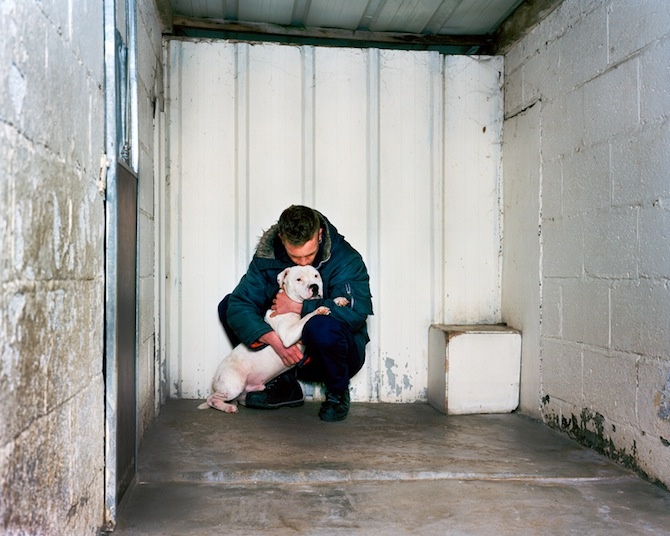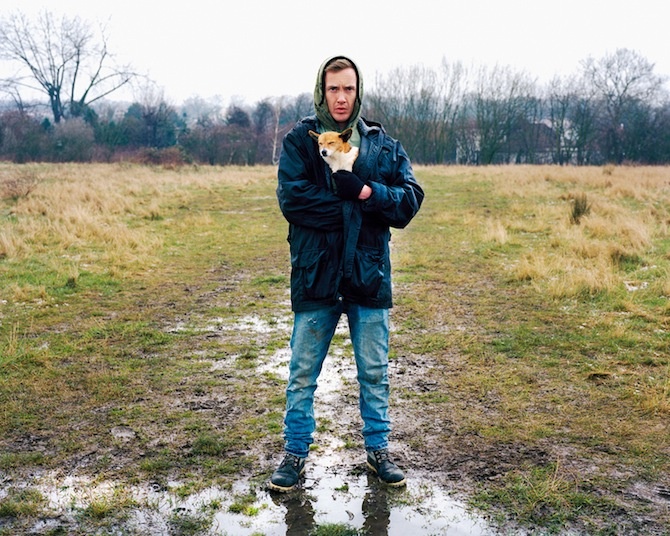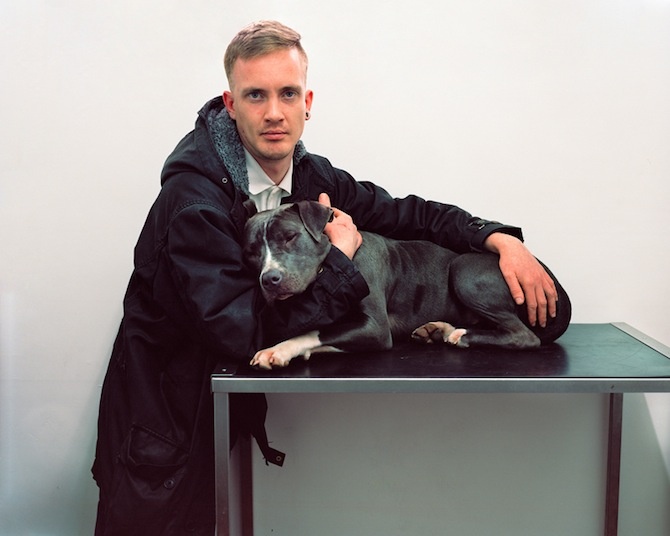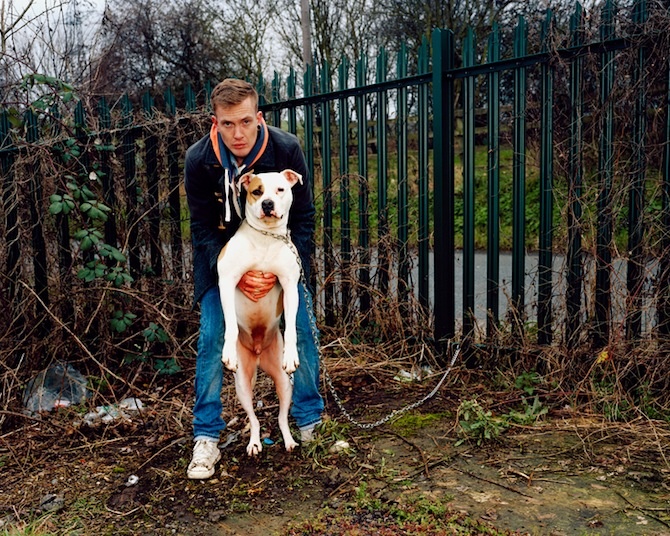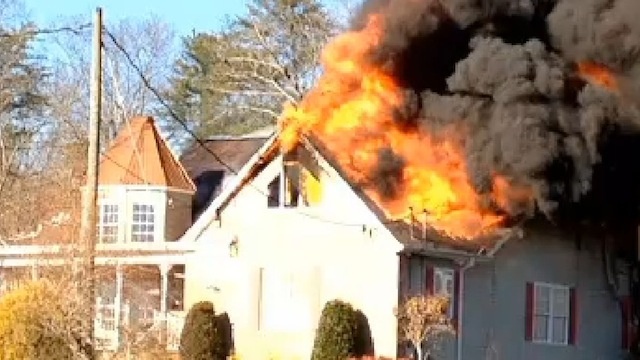![]()
![]()
All illustrations by Sammy Harkham
It was a hot day in mid-June when Marissa Ponterella, who answers phones at the Brooklyn Brewery, told me I had a call from a special agent from Homeland Security. My mind raced. Fuck.
Before founding the brewery in 1988, I was a Middle East correspondent for the Associated Press based in Beirut and Cairo from 1979 to 1984. I sometimes talk on the phone with old friends in Beirut to catch up on Middle East politics. I was in Beirut about a year ago for a wedding. Could it be that the NSA, recently revealed to be monitoring everyone’s phone calls, had a problem with my old friends in the Lebanese capital? Could it be that someone was tampering with our export shipments, or with the grain and hops we import? Years ago, we distributed a beer brewed in Zimbabwe. The DEA inspected some of those shipments because they suspected that drugs were being trafficked inside their shipping containers. Someone must have given them a false tip because they found nothing.
On the other end of the line was Special Agent Perry P. Kao from the New York office of the Department of Homeland Security Investigations and US Immigration and Customs Enforcement. He told me he wanted to come and see me. He sounded friendly.
“Of course, but can you tell me why?” I asked.
“I’d like to tell you when I get to the brewery,” Kao said. Two hours later, Kao and Special Agent Tim Auman arrived at the brewery. They showed me their gold-plated Homeland badges. I offered them coffee and water and led them to a conference room for a private meeting.
“Well, you are probably wondering why we wanted to meet with you,” Kao said with a big smile. “It’s about an incident you were involved in during the war in Lebanon in 1980.”
“Are you referring to the time I was abducted in south Lebanon?” I asked. This was not the first time that agents of the US government had questioned me about my abduction in 1980. I had testified twice for the Department of Justice about the incident. The kidnappers released me, but they tortured and killed two Irish UN peacekeepers who were with me. “That’s the one,” said Kao.
![]()
During my time in Lebanon, the nation was embroiled in a civil war that had begun in 1975. There was a standoff between right-wing Christians led by the Phalangist Party and leftist Lebanese militias allied with the Palestine Liberation Organization. In 1978, the Israeli Army invaded south Lebanon in an attempt to neutralize PLO guerrillas who occasionally launched attacks on Israel.
When the Israelis retreated, the United Nations established a nine-nation peacekeeping force in the south named the UN Interim Force in Lebanon (UNIFIL). The Israelis opposed this initiative and dug in, refusing to withdraw from a roughly ten-mile swath of the border. They left that enclave under the supervision of rebel Lebanese army major Saad Haddad, a Christian allied with the Phalangists. Israel trained, armed, and funded Haddad’s militia—the South Lebanon Army. On April 18, 1979, Haddad declared the enclave “Free Lebanon.”
I was relieved to know that Homeland was not calling on me for one of the other reasons that had flashed into my mind. But I began to feel trepidation about picking away at an old and deep wound.
Thirty-four years ago, on April 18, 1980, I was with a United Nations Peacekeeping patrol that was abducted in south Lebanon. The kidnappers released me after a couple hours, but they tortured and killed two Irish UN peacekeepers who had accompanied me at the time of the abduction: Private Derek Smallhorne, 31, a father of three, and Private Thomas Barrett, 29, who had a baby daughter in Ireland. They tortured and shot a third Irishman, Private John O’Mahony. US Major Harry Klein, an American officer working for the UN, and I carried O’Mahony out of harm’s way. He lived.
“You guys know that the killer, or at least the man who abducted us, is living in Detroit, driving an ice cream truck, right?” I asked, genuinely hoping that in this day and age of information technology, my previous interviews with officials about the matter had been recorded and filed away somewhere.
“Yes, we know that, and he has applied for US citizenship,” Kao said. He said Homeland had determined that the mastermind behind the kidnapping, Mahmoud Bazzi, had entered the United States illegally with falsified papers. He was granted political asylum, then a green card, and now wanted to become an American citizen.
That was news to me. The last time I had heard anything about Bazzi was 2006 in Washington, DC, where I had been called to give my deposition to the Department of Justice. DOJ investigators came to see me after the Irish television network RTE’s program Prime Time aired a detailed one-hour special titled The Enclave of Killings about the 20th anniversary of the ugly incident in Lebanon in April 2000. The assassination of the Irishmen was, of course, big news in Ireland and the lead story in the New York Times on April 19, 1980. Historically, very few Irishmen have died in foreign wars.
RTE’s reporter on the 2000 follow-up story, Fiona MacCarthy, had tracked Bazzi down in Detroit and accosted him in his front yard one morning. He first claimed not to speak English. RTE had brought a translator with them.
Unable to stall any further, Bazzi claimed he had not murdered the Irishmen, despite Lebanese press accounts of him reportedly boasting that he was responsible for the killings. He said Saad Haddad, the leader of the Israeli-supported militia that had employed him—the so-called South Lebanon Army—had forced him to confess to the killings in television interviews. He said that he would have been killed had he not claimed responsibility for the slayings.
![]()
FROM RIGHT TO LEFT: the author, Saad Haddad, and Haddad’s Israeli minder, at Haddad’s headquarters a couple of months before the kidnapping
I suggested to Kao that he contact the Department of Justice to request copies of my testimony to them after the RTE story was aired. He said he had already contacted the DOJ. He had been told my testimony was lost. To my recollection, I was interviewed by DOJ investigators at least once at my office at the Brooklyn Brewery and a second time in Washington. The Brooklyn meeting took place on June 14, 2006. I met with Adam S. Fels, a senior trial attorney of the DOJ Office of Special Investigations, and Todd Huebner, a senior historian from the same office. I recounted the story of the abduction in great detail.
Fels and Huebner explained that the Office of Special Investigations was the unit of the DOJ that was tasked with hunting down former Nazis suspected of war crimes who had fled to locales all over the globe following World War II. The OSI tracked down around 70,000 of these criminals during its existence, but by 2006, most of the Nazis were dead. Fels and Huebner said the OSI had a new brief from Congress under the 2004 Anti-Atrocity Alien Deportation Act: to bring to justice individuals who had committed war crimes abroad and were currently living in the United States.
“We are but one component of a comprehensive federal interagency effort to ensure that perpetrators of these terrible crimes find no sanctuary in this country,” said Eli Rosenbaum, OSI director, in testimony before Congress in December 2005. The OSI employs historians, political scientists, and linguists in their investigations, which have resulted in many high-profile prosecutions of ex-Nazis.
My story in Lebanon began with an unusual summons to the US Embassy in Beirut by Ambassador John Gunther Dean a few days before the abduction. Dean was one of those rare Foreign Service officers who sought postings in conflict zones. Before coming to Beirut, he had been the ambassador to Cambodia during the rise of the genocidal Khmer Rouge. His book, Danger Zones: A Diplomat’s Fight for America’s Interests, details his exploits around the world.
Dean was a known critic of Israel’s partnership with the Phalangists and Haddad. He wrote that Haddad’s presence in the south was undermining the Lebanese government’s efforts to reassert its sovereignty there. When I first met him at the embassy, Dean was wearing a lightweight summer suit with a turquoise tie, tanned and confident with his thinning hair brushed back. He served me coffee in his office, situated on an upper floor of the embassy with a view of the sparkling blue Mediterranean Sea.
There were constant clashes between Haddad’s troops and the 6,000-person UNIFIL. In one conflict with the Irish Battalion of the UN in the village of At-Tiri that commenced on April 6, 1980, an Irishman and a militiaman from the South Lebanon Army were killed. Haddad subsequently demanded that UNIFIL pay him $10,000 for the killing or turn over the bodies of two Irishmen. He made his demands on the Voice of Hope, an Israeli-based radio station run by American Christian fundamentalist George Otis, a former general manager of Learjet.
Haddad was constantly making similar threats. His units repeatedly abducted UNIFIL soldiers and later released him. In this case, he also refused to allow the UN to resupply the Lebanon-Israel border posts that monitored the 1949 armistice agreement between the two countries. Those units were part of the UN’s Observer Group Lebanon.
Dean said there was an agreement with Haddad and the Israeli Army to allow the UN to resupply the posts. He suggested I go to south Lebanon the next day and meet Major Klein at the Irish Battalion headquarters at Tibnin. He said I could accompany Klein and the resupply trucks. This was an exciting opportunity for a young reporter. I had come to Beirut a year before and had since worked in Iran during the revolution and the US hostage crisis. In Lebanon, I covered the ongoing civil war and the turmoil in south Lebanon.
AP photographer Zaven Vartan and I left Beirut at sunrise on a cool and sunny spring day. We drove in the Green Hornet, a bullet-pocked Mazda compact with a sign in the window that read, PRESS—DON’T SHOOT, in Arabic, English, and French. There was a nice breeze coming off the Mediterranean and the air smelled of orange and banana blossoms as we drove south on the coastal highway. We passed through militia checkpoints as we neared the southern port city of Sidon, its apartment towers scarred with bullets, artillery, and rocket fire from the civil war and the 1978 Israeli invasion. At the biblical city of Tyre, we turned east and climbed the rocky, rolling hills of south Lebanon, sprouting with fragrant springtime wildflowers, passing through PLO and UNIFIL checkpoints, and finally through the UN-controlled zone and into Tibnin.
![]()
At the small stone building that served as Irish Battalion headquarters in Tibnin, we met Klein, a tall, husky Vietnam veteran from Kalamazoo, Michigan, who was with Captain Patrick Vincent of Lille, France, an erect and circumspect Frenchman. Both were with Observer Group Lebanon. They served us tea as we sat on the porch of the Irish headquarters. Klein told us that Haddad’s men had recently ransacked the UN Observer posts on the border, stealing radio equipment and personal belongings from the unarmed UN workers. The posts, he said, had not been resupplied since April 3. Later that day he invited Zaven and me to accompany the three-vehicle convoy to the Observer post at Maroun Al-Ras.
According to the comprehensive 2000 Irish TV report by RTE, then Private O’Mahony, one of the Irish drivers, said he drove to Tibnin that morning with one of his fellow drivers, Private Barrett, who had only a week left on his deployment in Lebanon. The morning of the kidnapping, O’Mahony caught him weeping while writing a letter to his wife and recalled Barrett’s eerie premonition: “I have a bad feeling… I’m not going to come out of this alive.”
With O’Mahony in the driver’s seat and Zaven next to him, I climbed into the rear of a white UN jeep with Klein and Vincent. Running ahead of us was another jeep and a truck driven by Irishmen wearing olive fatigues and the baby-blue helmets of the UN peacekeeping forces. On the outskirts of the village of Beit Yahoun, with the UN and Haddad-controlled checkpoints a few hundred yards apart, we had expected to meet Abu Iskandar, a Haddad lieutenant who was to escort us to Maroun Al-Ras. Iskandar was not there, but Haddad gunmen, wearing Israeli uniforms, waved us through.
We were bouncing down the road discussing military service and journalism when, barely five minutes outside Beit Yahoun, our convoy ground to a halt. We heard shouts. Looking through the front window of the jeep, I saw young gunmen pointing automatic weapons at us from behind the gray stone walls on either side of the road. Some wore civilian clothes, others olive Israeli uniforms and red berets. As we climbed out of the jeep, a Peugeot 404 drove up from behind.
An unshaven man who looked to be around 30 years old stormed out, recklessly waving a pistol at us, speaking in hurried, jumbled Arabic. Major Klein said that he recognized the man as a Haddad officer but could not recall his name. The gunmen disarmed the three Irish drivers and confiscated Zaven’s camera bag. The two UN officers, O’Mahony, and I were shoved into the Peugeot. The rest of our crew was in the same predicament, their vehicles commandeered by Haddad’s men trailing close behind us.
We were taken to a seemingly abandoned schoolyard, slowing down when we reached a rutted path toward a bombed-out split-level schoolhouse. Bazzi shouted out the window to someone I could not see and then stopped hard at the entrance to the school. He ordered us out of the car and demanded to know our nationalities and religious affiliations, his men repeating his demands many times over. Each of us repeatedly stated our homelands.
When Zaven said he was an Armenian Lebanese Christian, they separated him from us. The rest of us were led down a flight of stairs at gunpoint, into a boy’s washroom. From the height of the urinals, it was clear it was an elementary school. Two gunmen were posted at the doorway and a third stood near the bottom of the stairwell. They waved their guns at us and again asked our nationalities. Once more, Klein and I told them that we were Americans, Vince said French, and the Irishmen were upfront about who they were. Their uniforms displayed the Irish flag. “American good, French good,” said our teenage captors, grinning. We smiled while nervously internalizing the implications of their omission: the Irish were “not good.” Having been pushed around by cocky young gunmen before in Lebanon, I had learned the best policy was to do exactly what they said to do. If they smile, you smile. If they ask where you’re from 500 times, you answer the same thing 500 times, in the same way. After 20 minutes of discussing our nationalities and various reasons for being in the region, I told them I was a reporter.
I had to piss. So did one of the Irishmen. I asked, and we received permission to use the urinals while one of the gunmen stood close behind us.
“It looks like maybe they have it in for the Irish,” he sighed.
I whispered back, “Yeah, with these assholes, you never can tell.”
A few minutes later, the motive of the gunmen became clear when the leader of the group, later identified as Bazzi, came to the door of the restroom waving the 9mm pistol and shouting, “My brother, my brother,” and a lot of other Arabic that I could not understand. He tugged at his black T-shirt, indicating he was in mourning for a brother killed in the recent clash with the Irish battalion. Klein ordered the Irish to stop smiling. We all stopped smiling. After yet another grilling about our nationalities, Bazzi and two gunmen prodded the three Irishmen down the corridor. They disappeared into a room at the end. Shooting echoed through the barren rooms and halls of the building. We heard screams.
![]()
“Oh my God, oh my God, they’ve shot them,” said Klein. “I never should have let them take them. I’m getting out of this country. This is the end for me.”
There was more shooting. Suddenly, two of the Irishmen bolted from the room, into the hallway, and out into the schoolyard where Haddad’s gunmen waited outside. Private O’Mahony staggered out the door with his pants pulled down. The gunmen herded back into the room. There was more shooting, inside and outside. O’Mahony screamed. Cars carrying more gunmen screeched to a halt upstairs. The newcomers included Haddad lieutenants known to Vincent and Klein, who told them he wanted to leave immediately, with the Irishmen. They newcomers barked orders to our captors and they left. They ordered us to help O’Mahony, who had again staggered into the hallway.
We found him sitting on the concrete floor, his head between his legs.
“You all right?” asked Klein.
“No,” he replied.
“Are you shot?” asked Klein.
“Yes,” he said, pointing to his back and foot.
Klein carried him outside, laying him on a discarded sheet of plastic. I helped carry the wounded Irishman out to the road. O’Mahony was relatively subdued but said his stomach hurt. Klein again demanded that Haddad release the other Irishmen, but Haddad’s lieutenants refused to give them up.
Moments later Bazzi drove off in the Peugeot with two gunmen and Smallhorne and Barrett. One of the Irishmen craned his neck to look back at me, his eyes wide with fear.
We raced O’Mahony to Bint Jbail, a nearby town that served as the provincial capital of southern Lebanon. We spotted some Israeli Army officers in the streets and decided it would be safer to transfer him to a taxi before driving back to the Irish UN headquarters in Tibnin. Zaven followed in a UN jeep. When we got there, Irish commander and UNIFIL commander Ghanaian General Emmanuel Erskine were waiting for us. At the Irish headquarters, a helicopter flew O’Mahony to a UN hospital in Naquora, Lebanon. Klein immediately contacted the Haddad and the Israeli military command to demand the Irishmen’s return. Zaven and I headed back to Beirut.
Just after dusk, we walked into Beirut’s AP bureau, stuffed with various members of the Western press corps. It was obvious how widespread the news of our capture had been, as everyone in the room was visibly surprised to see us alive. We quickly learned the press had been reporting that I was missing and believed kidnapped all day. About an hour later, on our drive to the bureau, an AP report from Tel Aviv quoted a UN spokesman as saying that both Smallhorne and Barrett had been found dead near Bint Jbail. Irish UN soliders later told me the men had been tortured before they were killed, their fingers chopped off and bodies partially skinned. One was shot in the front of the neck, and one in the back of the head.
The Irish Times quoted an Irish Army communique as saying Haddad lieutenant Iskandar led UN troops to the dead bodies of the Irishmen.
Zaven and I filed a news story specifically stating that “Israeli-backed militiamen” tortured and killed the two Irish UN peacekeepers. The abductors stole all Zaven’s cameras, so he had no photos. I wrote a first-person piece about my experience. A few minutes later, a story came out on the wire from the AP bureau in Tel Aviv in which an Israeli-military spokesman was quoted in as saying that “Arab villagers” had tortured and killed the two Irishmen.
![]()
It was routine for the AP bureau in Beirut and in Tel Aviv to identify the various factions in Lebanon by their backers, i.e., the Syrian-backed Popular Front for the Liberation of Palestine–General Command, the Iraqi-backed Arab Liberation Front, etc. There was constant friction between the AP bureau in Beirut and the AP bureau in Tel Aviv over certain types of phrasing in dispatches coming out of Lebanon. Our report was no exception.
I had witnessed the involvement in the incident of Haddad officers, but the Israeli military spokesman’s casting the blame on “Arab villagers” was given equal weight.
The AP foreign desk in New York changed my copy to blame the incident on “Lebanese gunmen,” which was, quite frankly, sugar-coated bullshit. There was no mention of or allusion to the culpability of Israeli-backed Haddad militiamen—the same who had kidnapped me whom and I watched drive the two Irish UN troops to their gruesome deaths—apart from a quote from Haddad denying that his men had anything to do with the incident.
The New York Times of April 19, 1980, led with the AP story and a subhead: “Identity of Killers Unclear.”
My counterpart in Tel Aviv, Frank Creapeau, complained about my account in a letter to Otto Doelling, the chief of the AP’s Middle East Operations. I complained about the Foreign Desk’s changing my copy in a letter to foreign editor Nate Polowetzky. The above was documented in an internal memo that AP executive editor Lou Boccardi asked me to write about a month after the article was published. This internal correspondence confirmed my overwhelming suspicion that the redaction of the words “Israeli-backed” and the inclusion of Haddad’s denial were purposeful conciliation to reactions from Israel. Nate told me that the Israelis were livid over my reporting of the incident, but I had been along for the ride and I was certain of the role of Haddad’s lieutenants in the abduction as I had filed it to New York.
Later, when it was all added up, the final sum was that Klein was blamed for the incident. In the RTE report, he said that he should never have taken Irishmen into the Haddad zone. But he added that he was acting under orders from Observer Group Lebanon and believed his mission to have had the approval of Haddad and the Israeli Army. Klein told me later that he felt his actions during the abduction were what had prevented him from being promoted to lieutenant colonel.
Bazzi later boasted of the incident in the Lebanese press. News reports at the time quoted Haddad as saying, “They took the two Irishmen and took their revenge. That is custom in the Middle East, especially in Lebanon, blood for blood, and you can’t change it.”
Two decades later when he was confronted in Detroit by RTE reporters, he loudly denied any involvement in the killings. He claimed that he was the fall guy and blamed Haddad for the Irishmen’s deaths. (VICE attempted to contact Mahmoud Bazzi multiple times, but he did not give a comment.)
In the RTE report, O’Mahony said Bazzi was the man who had shot him at the school. Since that day it has been vividly clear in my memory that it was he who abducted me and the others. I do not know who ultimately was responsible for physically torturing and killing the two Irishmen, but the last time I saw them, they were in the custody of men under the command of Bazzi and Haddad.
Klein later told me that Israel’s liaison with Haddad, Israeli Captain Yoram Hamizrachi, a former Israeli TV correspondent, was on vacation at the time of the incident. According to Klein, if Hamizrachi had been in Lebanon, the incident never would have happened, but we will never know all of the facts. Haddad died of cancer in 1984 at age 47, Klein at 58 in 2002 of a brain aneurism.
![]()
One of the most unsettling codas to the incident was a news conference held in northern Israel. A couple months prior, I had met Haddad at his office in south Lebanon. I told him that my grandfather on my father’s side of the family had emigrated from Lebanon in the 1890s. Haddad, a Christian, asked what religion I practiced. My response was that I believed my grandfather had been raised Muslim but later married an American Christian and that my American-born father and I both were raised Christian. I later came to embrace atheism.
When Haddad appeared at the news conference, he denounced me as a Lebanese Muslim determined to slander him and his fellow Christians in Lebanon. This specific and completely irrelevant mention of my Lebanese heritage was the only time in my nearly six years in the Middle East that my background became part of a story. It was frightening. In those days, people were killed in Lebanon for much less. Luckily, the report did not appear in the Western press. It was broadcast on Haddad’s Arabic radio station.
In February 1982, nearly two years after the incident, Israeli Parliament member Eliahu Ben-Elissar (who would go on to become Israel’s ambassador to the United States in 1996) complained that the international press had a “double standard” for news coverage that distorted Israel’s geopolitical position in the Middle East. Ben-Elissar also served as the chairman of the Knesset Foreign Affairs and Security Committee and a confidante of Prime Minister Menachem Begin, which made it doubly ironic when he singled out and implicated the New York Times, ABC News, the Associated Press, and other Western-media outlets in his grandiose accusations, saying that threats and intimidation cowed journalists based in the Arab world. By contrast, he said, journalists based in Israel were free to report anything they wanted.
“I don’t want to recall what happened to the AP reporter who was held for three hours,” he said. “The same reporter, whose name is Steve Hindy, was released immediately—but what happened and what publicity this incident received [was] as if one hand washes the other.”
My boss at the time, the foreign editor, Nate Polowetzky, issued a rare defense of the AP’s handling of the story. “The Hindy matter became news instantly because two United Nations soldiers were killed and a third wounded in the incident,” he said in a statement.
Given the way the AP Foreign Desk edited my copy, I think it’s clear there was a double standard, but not the one that Ben-Elissar alleged.
In September 1982, Haddad’s men were allegedly involved in the massacre of Palestinians in the Sabra and Chatilla refugee camps on the outskirts of Beirut. Israeli forces surrounded the camps and allowed Phalangist militiamen to enter and killed 3,000 civilians. I recall counting bodies in the camps when someone shouted, “Haddad’s men are back.” There was a panicked stampede of people out of the camps. Recalling Haddad’s slander of my Lebanese heritage, I too was freaked out for a few minutes.
US ambassador John Gunther Dean, the man who helped arrange my visit to south Lebanon on that fateful day in 1980, had also suffered a rocky relationship with the Israelis and their allies in Lebanon, the Phalangists. Dean, now 87, was born in Breslau, Germany, to a prominent Jewish family. He immigrated to the United States in the 1930s and graduated from Harvard University before joining the Foreign Service. He lives in France and Switzerland.
In August 1980 in Beirut, Dean’s three-car convoy was hit by antitank missiles and small-arms fire that he suspected came from members of the Phalangist militia, the Christian militia that was allied with the Israelis in the 1982 invasion of Lebanon. Emerging out of the attack without a scratch (although his armor-plated limousine was badly damaged), Dean said serial numbers confirmed the missiles launched at his convoy had been manufactured in America and shipped to Israel.
“I know as surely as I know anything that Mossad, the Israeli intelligence agency, was somehow involved in the attack,” he wrote in his book Danger Zones. “Undoubtedly, using a proxy, our ally Israel had tried to kill me.”
In 1980, Irish prime minister Charles Haughey condemned the killing of the Irishmen as “wanton murder,” and the UN Security Council said it amounted to “cold-blooded murder.” The Irish government has repeatedly stated that it has tried to find a way to extradite Bazzi. The last time was January 2005, when the Irish Independent newspaper reported that Defense Minister Willie O’Dea asked Attorney General Rory Brady to explore ways of bringing Bazzi to justice in Ireland. The attorney general’s office had earlier concluded it had no grounds to bring Bazzi to Ireland because extradition proceedings would have to be initiated by the country where the crime was committed. And, of course, there is no extradition treaty between Lebanon and the United States.
I would like for this story to end with a man who is now selling ice cream out of a truck in Detroit and trying to become an American citizen going to jail for his involvement in the torture and murder of two UN peacekeepers. For now the story ends on June 25, 2013, with my meeting Special Agent Perry P. Kao at the Homeland Security office in Manhattan.
Kao showed me a grid of headshots of Arab men, all with similar mustaches and facial hair. Could I find Mahmoud Bazzi, the man who had abducted me 33 years before? I pointed to a graying, fat-faced version of the man who had pointed a pistol at me in that schoolhouse in Lebanon.
“That’s him,” Kao said, adding that Homeland determined that Bazzi had entered the United States illegally, using falsified papers. He said the US Immigration and Customs Enforcement agency was planning a hearing in Detroit on Bazzi’s request for citizenship and asked if I would testify about the incidents, perhaps by a video connection.
“Yes,” I said.
As of press time and to my knowledge, no date has been set for the supposed hearing.





















